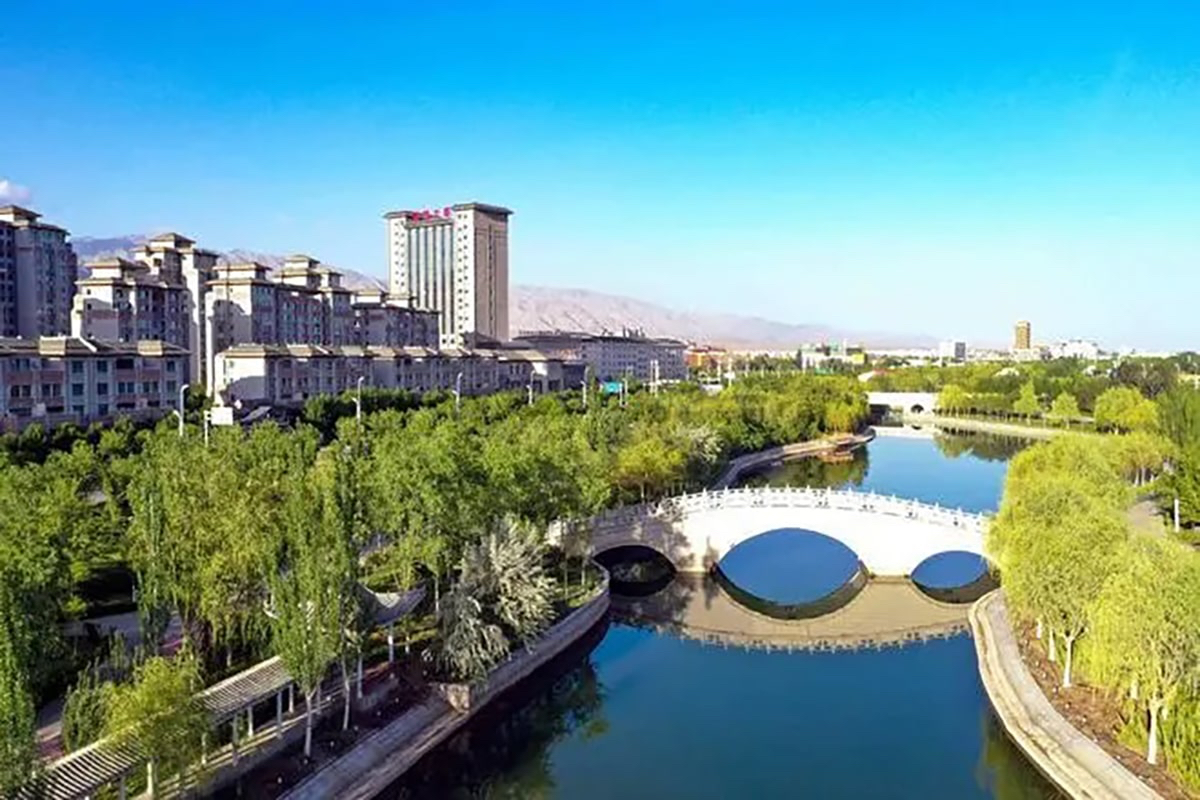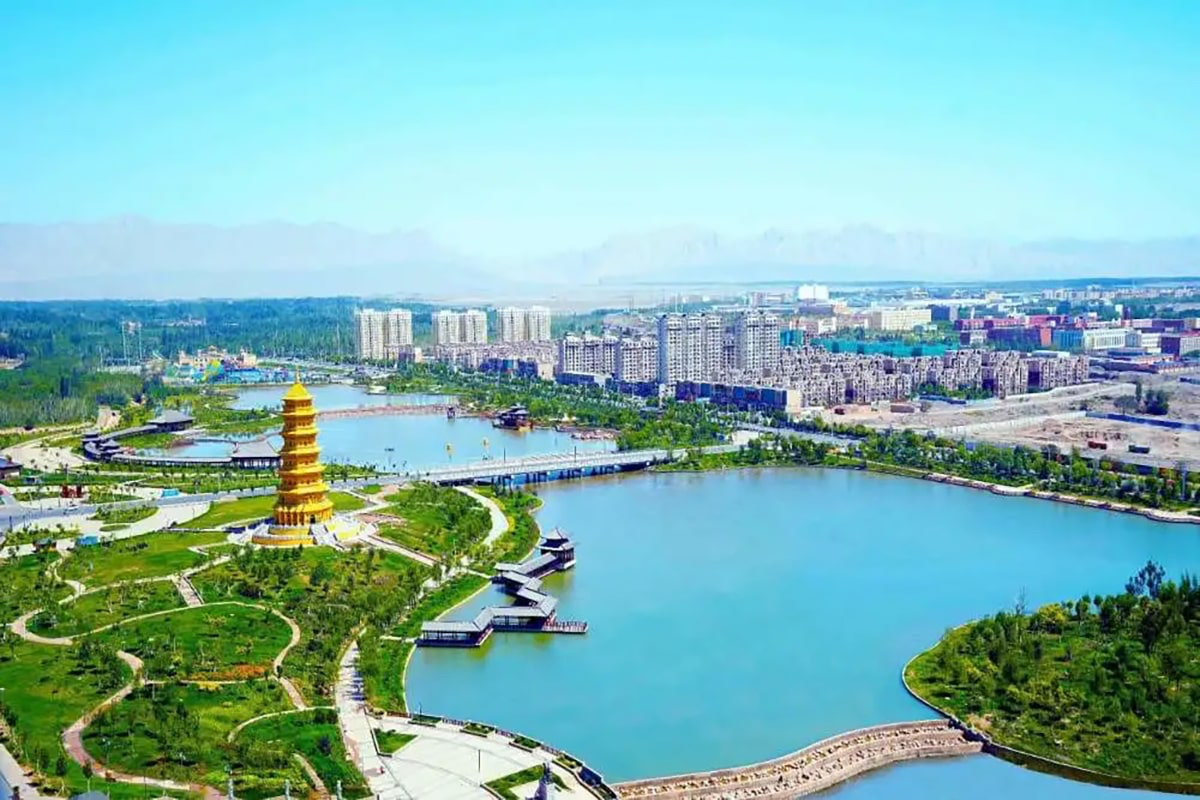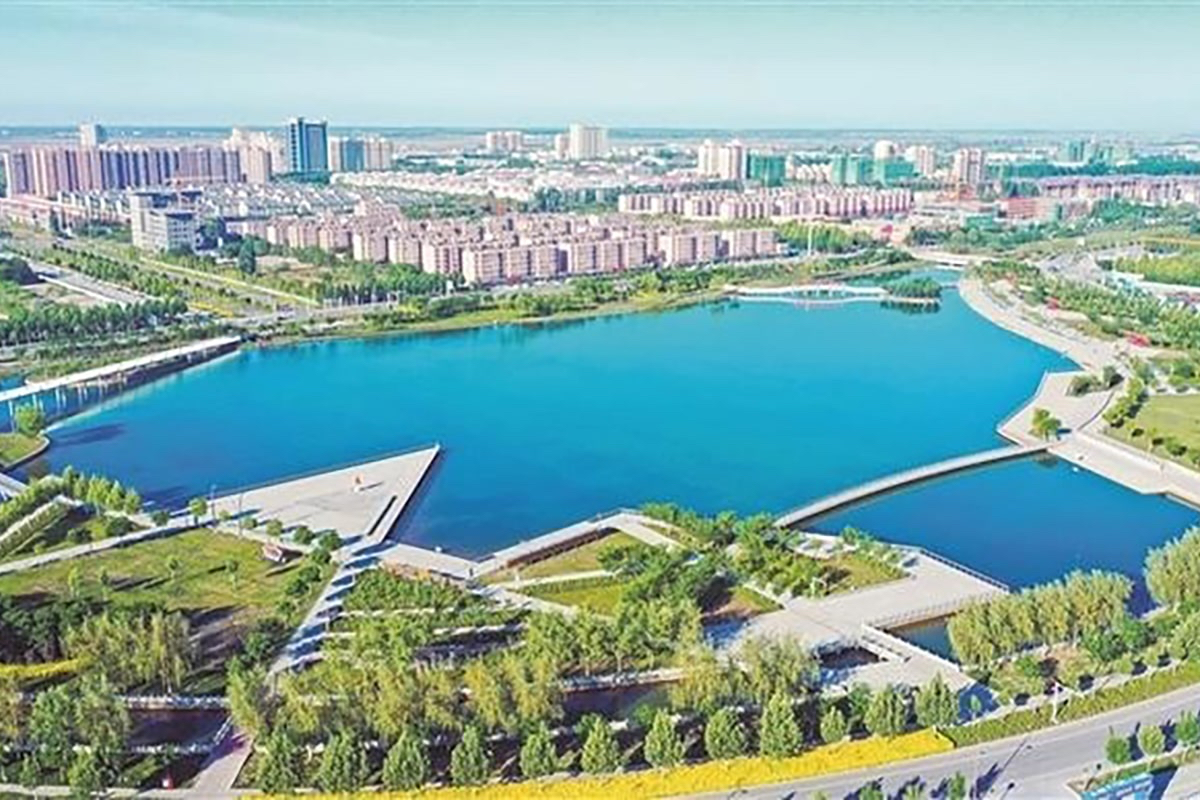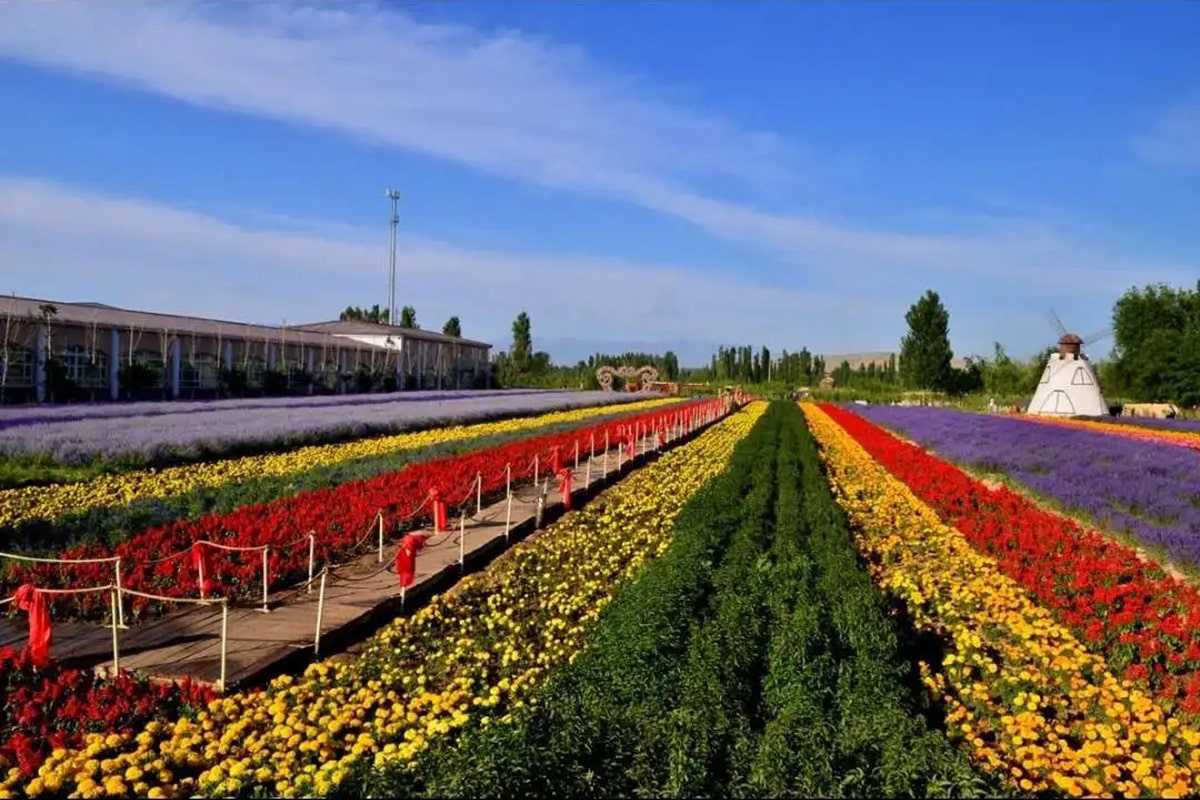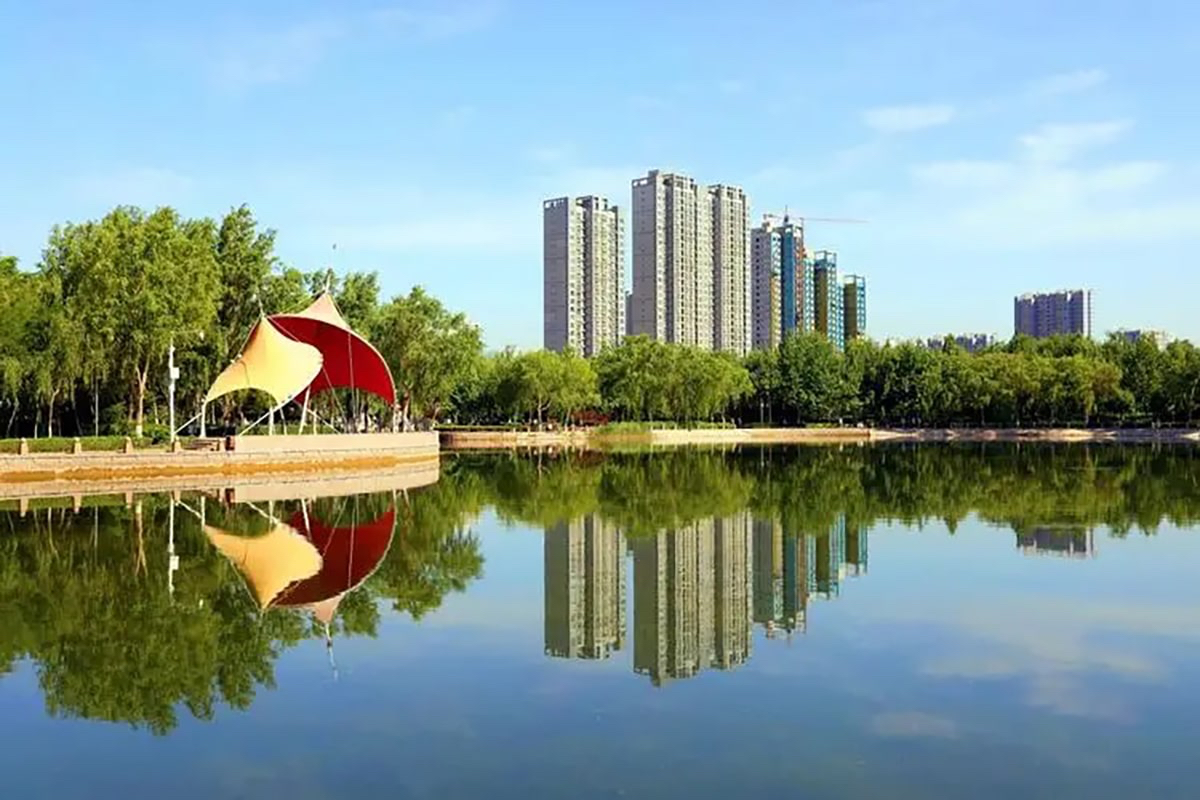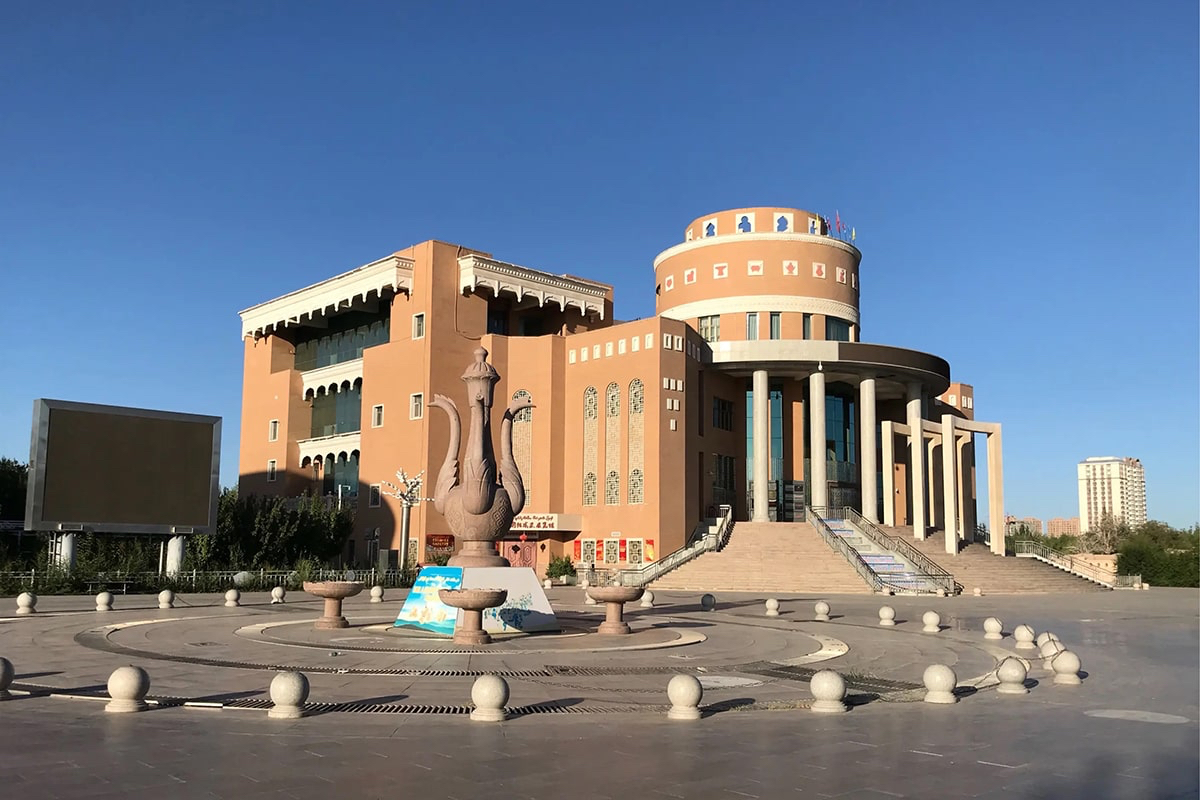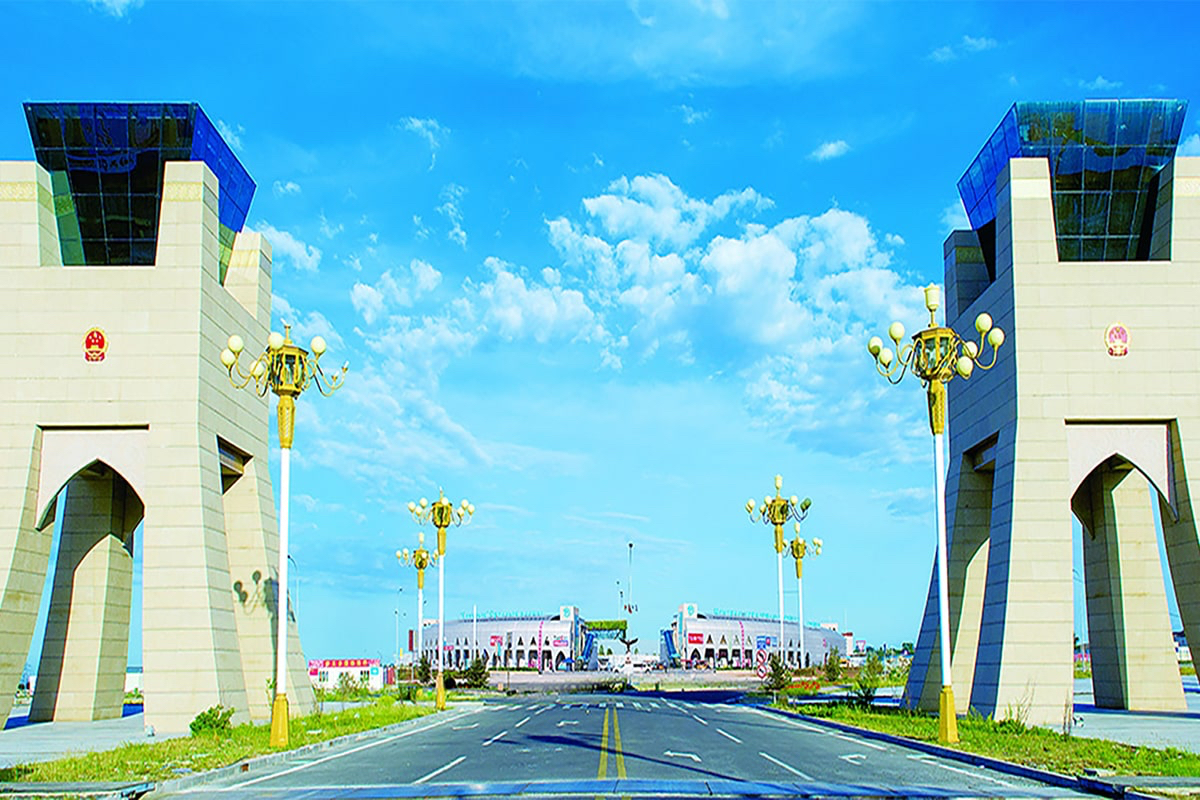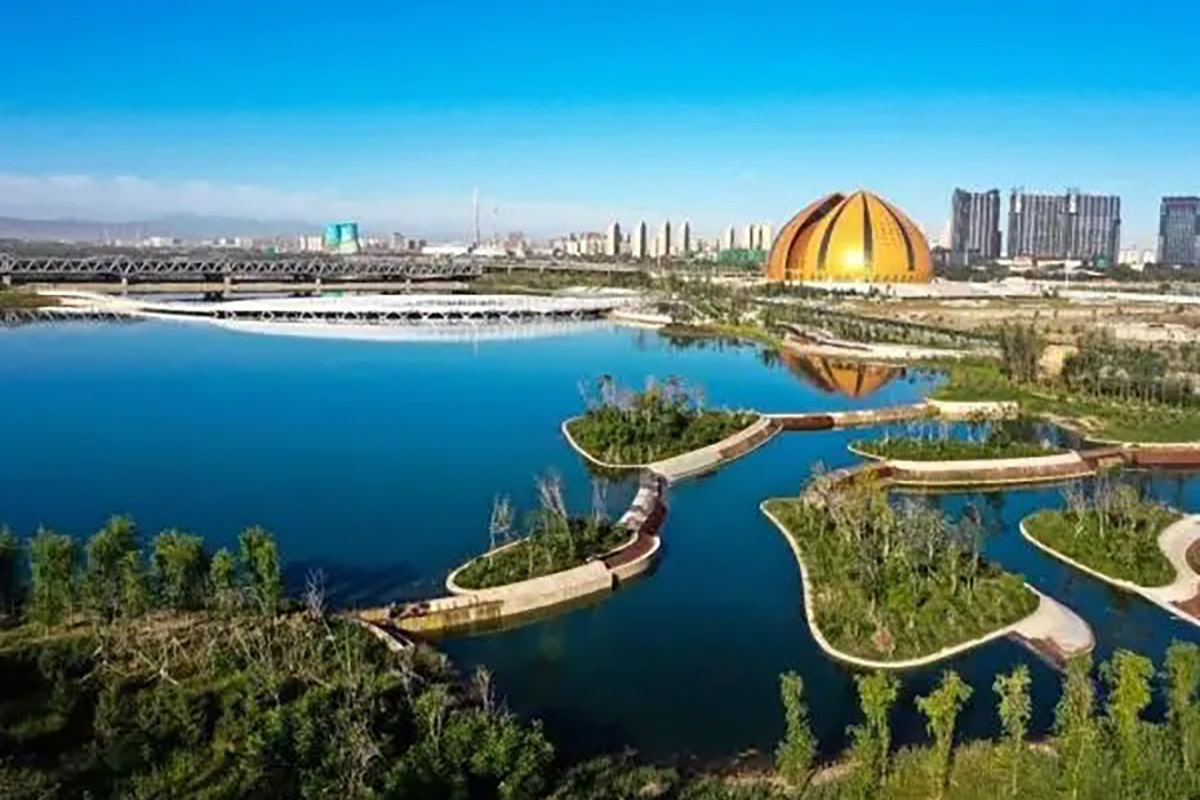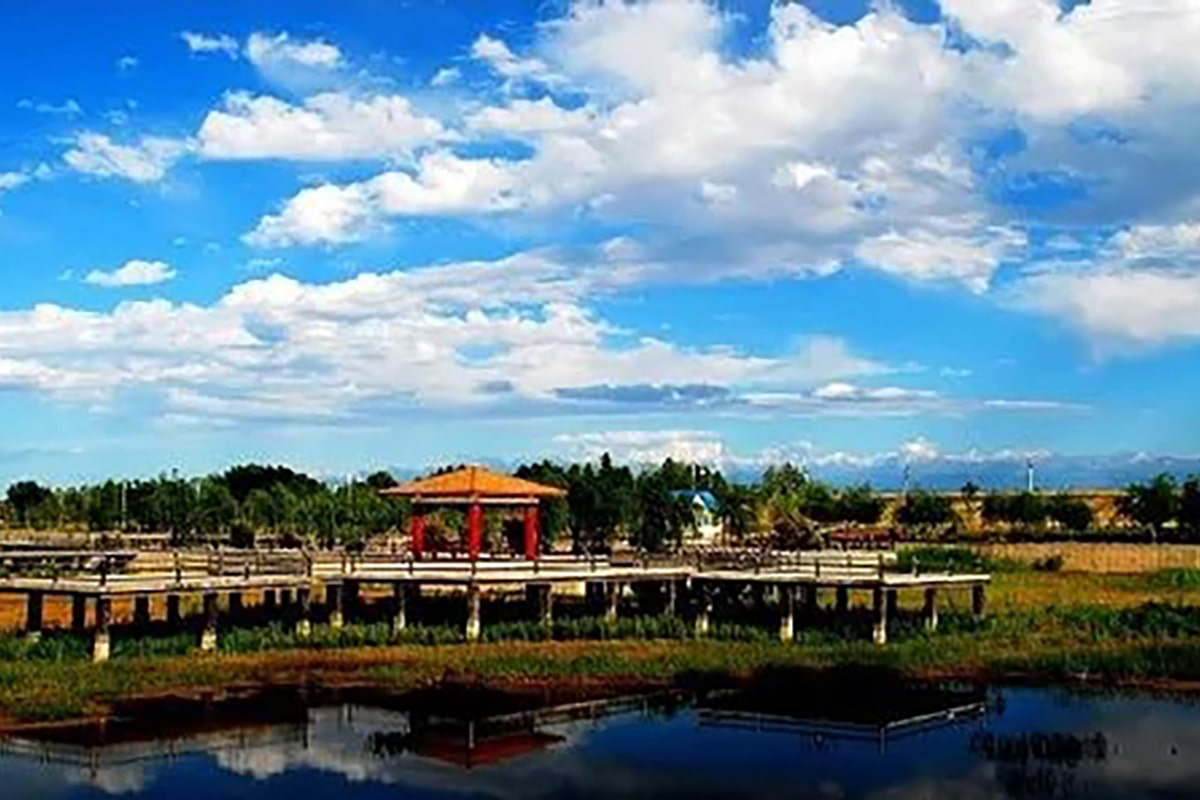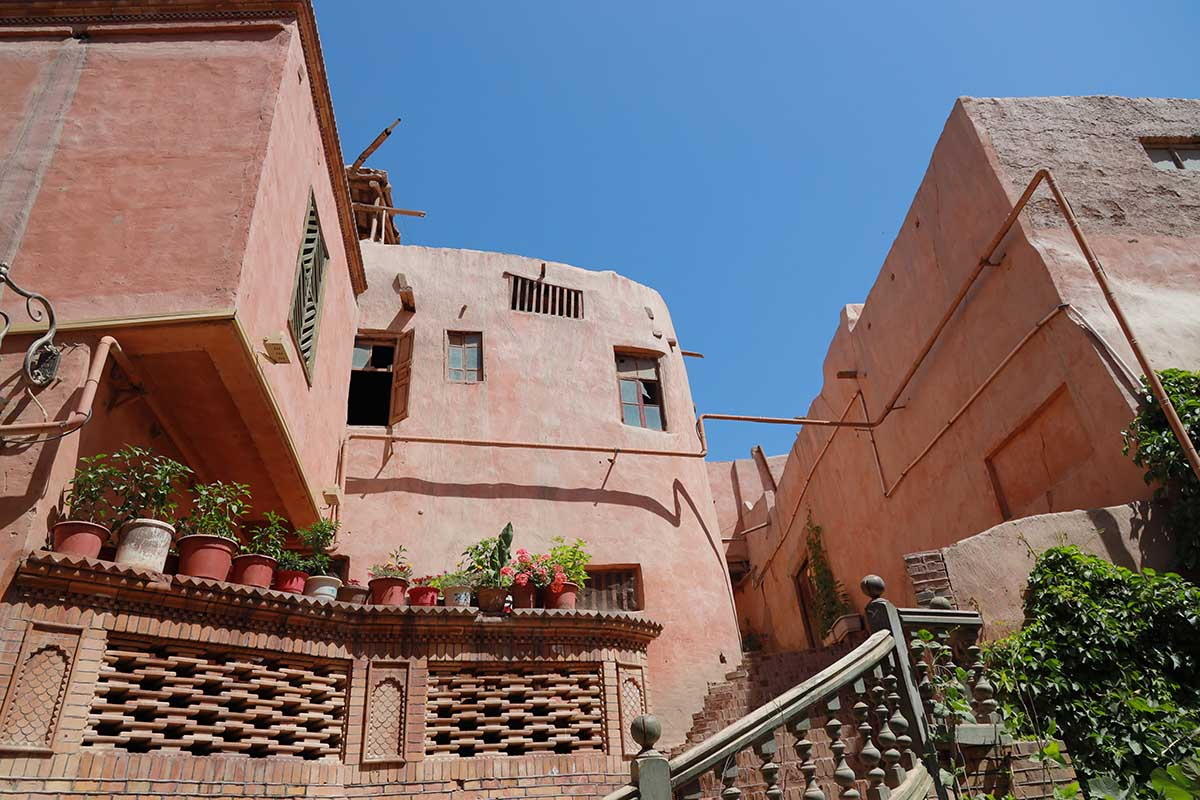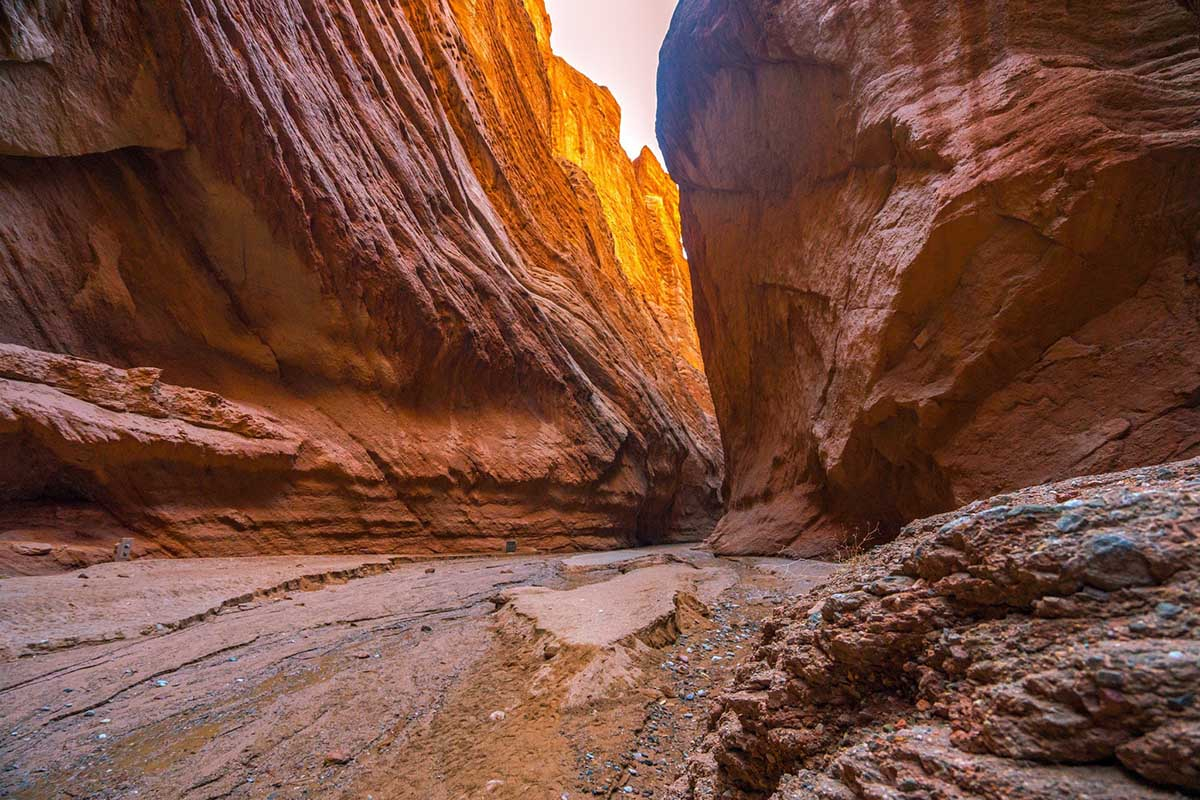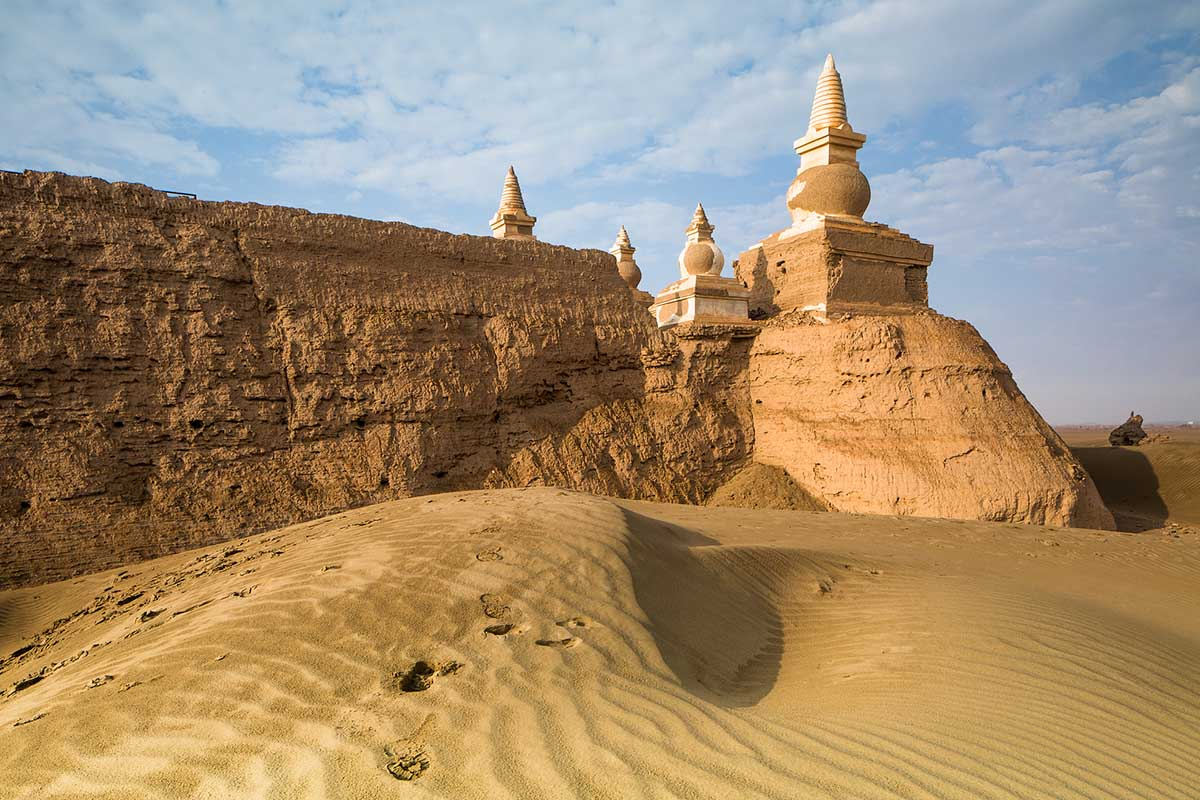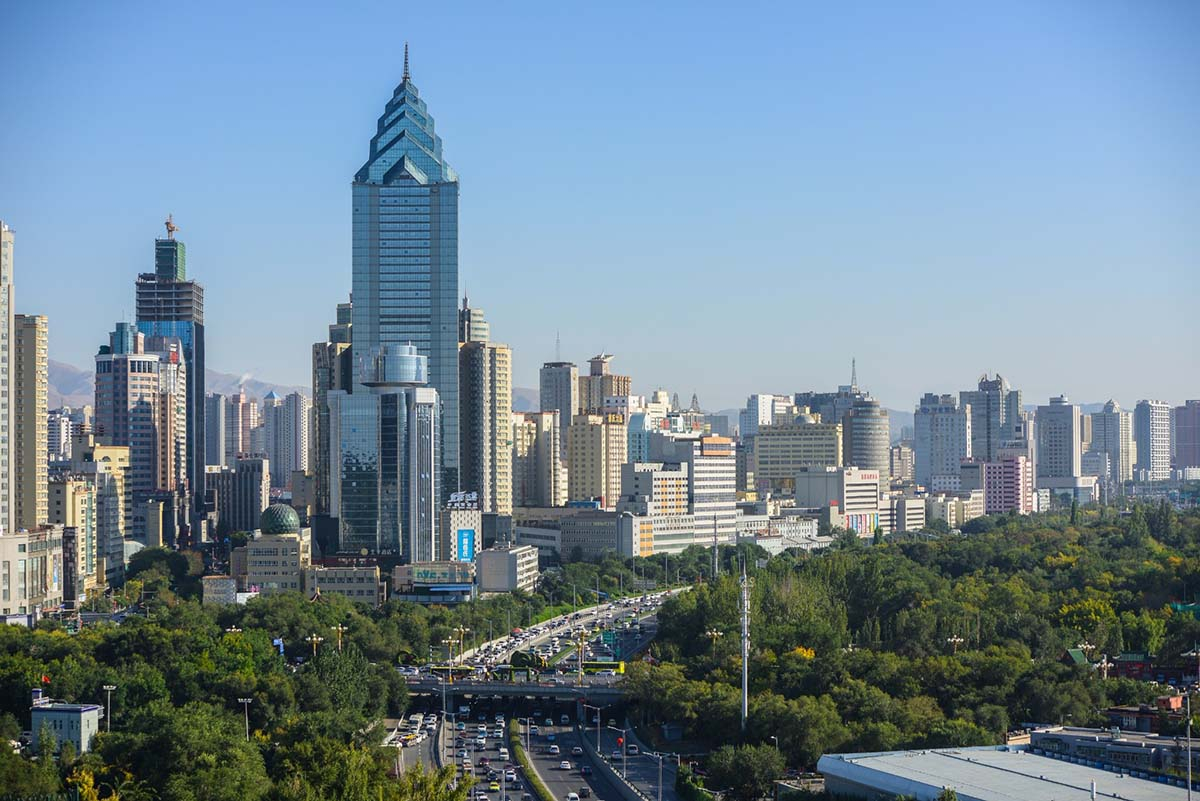Xinjiang Turpan Travel Guide
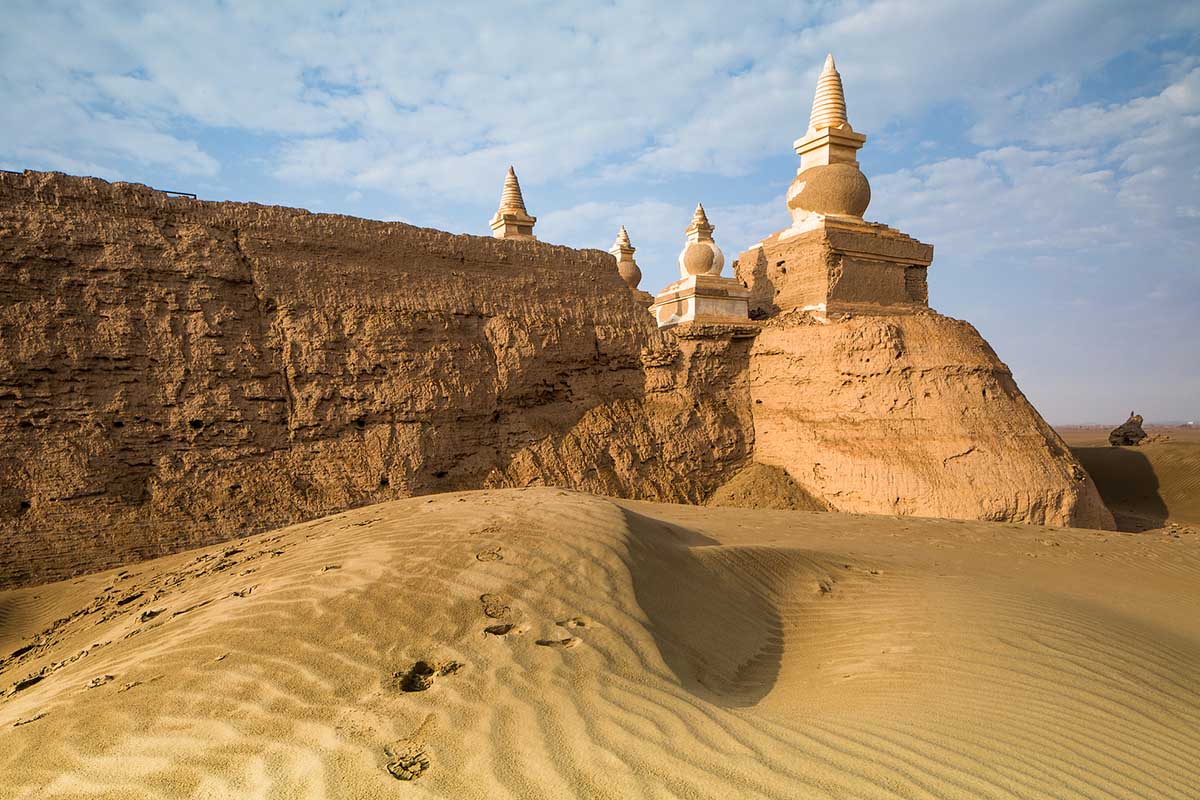
Turpan, an oasis city, is located at the southern foot of Bogda Peak and in the center of Turpan Depression. The area around the city, the Turpan Depression, is the lowest point in China and second lowest on Earth (after the Dead Sea) at 154 meters below sea level.Because of the drastic 5,000-meter difference in height between the mountain tops and the bottom of the depression, the scenery too, varies greatly at different altitudes from perpetual snow at the summits to green oasis at the foot of the mountains. After a long journey from the desert, tourists are always fascinated by the extraordinary beauty of the depression with its snow-capped mountains, salt lake, and particularly the Flaming Mountains. It is very dry in summer and sometimes very hot, well into the forties Celsius. The local people have developed karez, an irrigation system composed of wells connected by underground channels, to counter the heat and drought of the place. No place in China is hotter than Flaming Mountain in Turpan, a mountain made famous by the classic Chinese mythological novel, Journey to the West.
● Top things to do in Turpan
In recent years, Turpan has attracted numerous tourists home and abroad not only because of its interesting weather and sweet grapes, but also because of the natural wonders and many historic and cultural sites. Turpan is a bright pearl along the Silk Road. The natural wonders include Lake Aydingkol (the second lowest-lying lake in the world, after only the Dead Sea), Flame Mountain (the hottest place in China), and so on. Other famous tourist spots are: Astana Ancient Tomb Complex, Turpan Museum, Shashan Park, Gaochang and Jiaohe Ancient City, Karez, and Grape Valley, etc.
● Jiaohe Ancient City, the capital of Cheshi Kingdom, is a city ruins with a history of more than 2000 years. It is recognized as the largest, oldest and best-preserved earth building city in the world. Because of its cultural importance, it was listed in UNESCO World Cultural Heritage Sites as a site of "Silk Road: Road Network of Chang'an-Tianshan Corridor".
● Karez is a special kind of irrigation system still existing in desert area. It consists of vertical wells, underground canals, ground canals and waterlogging pond. The vertically dug wells are linked together to channel the water which occurs during summer rain season, or melt from snow mountains of Tianshan range to desired farmlands on the ground.
● The Flaming Mountains are barren, eroded, red sandstone hills in the Tian Shan of Xinjiang. They lie near the northern rim of the Taklamakan Desert and east of the city of Turpan. Their striking gullies and trenches caused by erosion of the red sandstone bedrock give the mountains a flaming appearance at certain times of the day.
● Grape Valley is an area of arid land in Turpan, Xinjiang, China, where grapes and other fruits are grown. The valley is 8 km long, 600-2,000 meters wide, and is located some 10 km east of Turpan's city center.
● Sugong Pagoda, known as the Turpan Pagoda among local residents is a Islamic building. A stone tablet at its entrance cites the reason for the pagoda's construction in Wei and Han characters. The structure was built in 1181 of the Hui calendar (1779) by Su Laiman II, the ruler of the Turpan Prefecture, to honor his father.
● Turpan Climate
Turpan has an extremely continental desert climate), with long, extremely hot summers (resembling a hot desert climate or BWh) and very cold winters (typical of a cold desert) and brief spring and autumn in between. Annual precipitation is very low, amounting to only 15.7 millimetres (0.62 in). The monthly 24-hour average temperature ranges from −7.6 °C (18.3 °F) in January to 32.2 °C (90.0 °F) in July, or a very large seasonal variation of 39.8 °C (71.6 °F); the annual mean is 14.4 °C (57.9 °F).[39] With monthly percent possible sunshine ranging from 48% in December to 75% in September, sunshine is abundant and the city receives 2,912 hours of bright sunshine annually.
Extremes have ranged from −28.9 °C (−20 °F) to 48.1 °C (119 °F), although a reading of 49.6 °C (121 °F) in July 1975 is regarded as dubious. However, the high heat and dryness of the summer, when combined with the area's ancient system of irrigation, allows the countryside around Turpan to produce great quantities of high-quality fruit.
● Best Time to Go
Turpan is the hottest city in China with long, hot summers, but no humidity. The winters are short, but very cold. Spring and autumn are the most comfortable seasons, but are unfortunately also short. The best time to visit Turpan is Autumn when it has comfortable daytime temperatures and cool nights. Moreover, various fruits get ripe and the area is shrouded in a sweet scent of fragrant fruits during this time of the year.
- HOTEST
- RECOMMEND
